In spite of all the forecasts of rain, It was another beautiful morning on the Sea of Galilee. I woke up at 6am, had breakfast in the hotel, and got in a little study prep for our itinerary today before boarding the bus at 7:45.

Today we began to focus on the ministry of Jesus around Galilee. On the way to our first stop, Murad talked to us about Judaism and the contrast of their legalistic teachings with the teachings of Jesus. He told us about the 613 laws of the Jews that come from the 10 commandments, the torah, and interpretations of Rabbis. One of these laws helps explain why we’ve never seen any meat at breakfast, but lots of cheese (dairy), and why we see lots of meat at dinner but no dairy. They have a law that prohibits the mixing of these two items in a meal that comes from the Talmud with no reasoning.
We again saw great views of the Sea of Galilee during the drive, and Murad commented that what we see today is what Jesus saw. The climate and geography are the same. For some reason it struck me as we were driving how lucky we are on this trip to have Dr. Cloud putting together the itinerary. It has been wonderful. We are also lucky to have Murad as a guide. He is a genuine archaeologist and scholar who is also a believer.
Mt. of Beatitudes (Mt. Eremos)

Our first stop was at the “Mountain of Beatitudes” which is also known by the name of Mt. Eremos. It is on the northwestern shore of Galilee between Capernaum and Gennesaret. This is the traditional location of Jesus’ Sermon on the Mount from Matt 5-7. The precise location is not known, but later during our tour of the site Murad explained his reason for believing that this was the actual site.
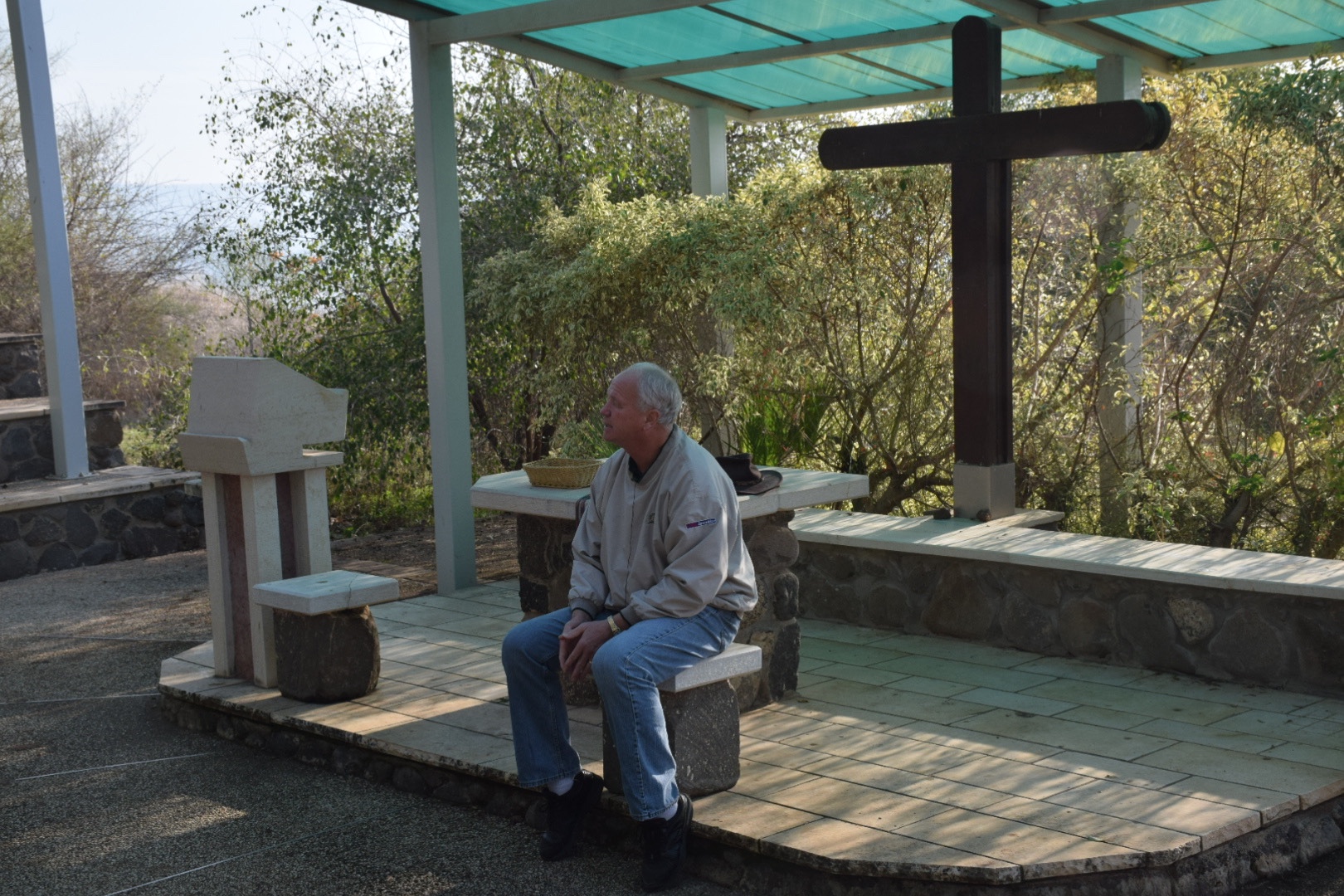
Upon arrival, both groups congregated at an open-air chapel with a beautiful view of the Sea of Galilee. Dr. Cloud made some introductory remarks and then Keith Parker quoted some selections from the Sermon on the Mount and led us in a prayer.
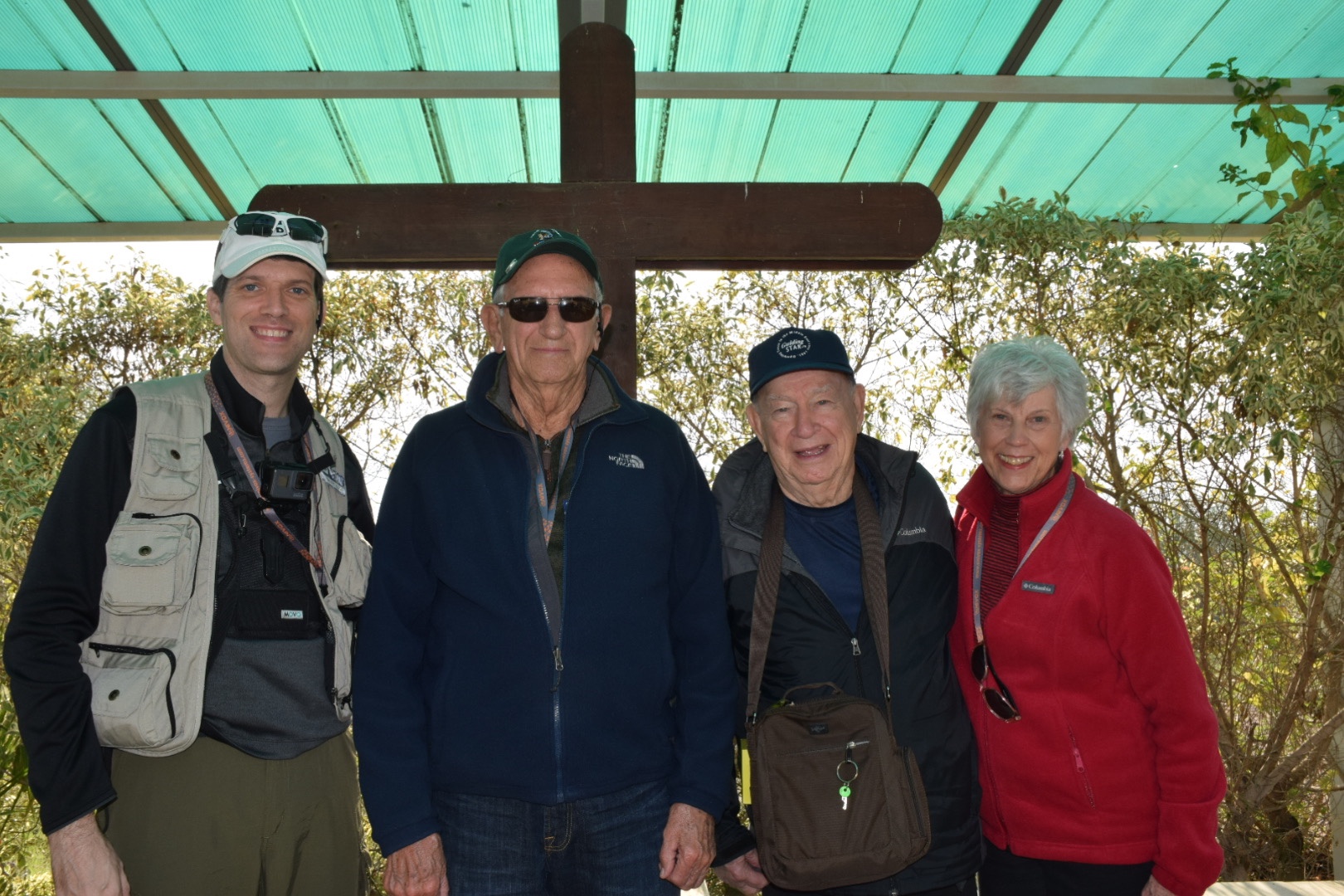
Murad then talked to us about Jesus preparing His followers for the heavenly life. He reminded us again about Herod the Great, who was a great builder but not great man. When he died, he vanished, and no one remembers him. He is an example of how selfish man can be. The son of man led a revolution. His ministry was rich in preparation for the heavenly life, not concerned with material possessions or filling our bellies. Jesus is the hope for the heavenly life, a new start with son of God.

After the message, we had a few minutes to meditate and look around, then Murad led our group to the other side of the mountain to show us the spot where he believes the sermon was delivered. He explained that it is a natural amphitheater, the geography matches the account in the gospels, it is a flat spot, and the Byzantines identified the spot 350 years after it happened. He then emphasized that the specific spot doesn’t matter only the content of the message.
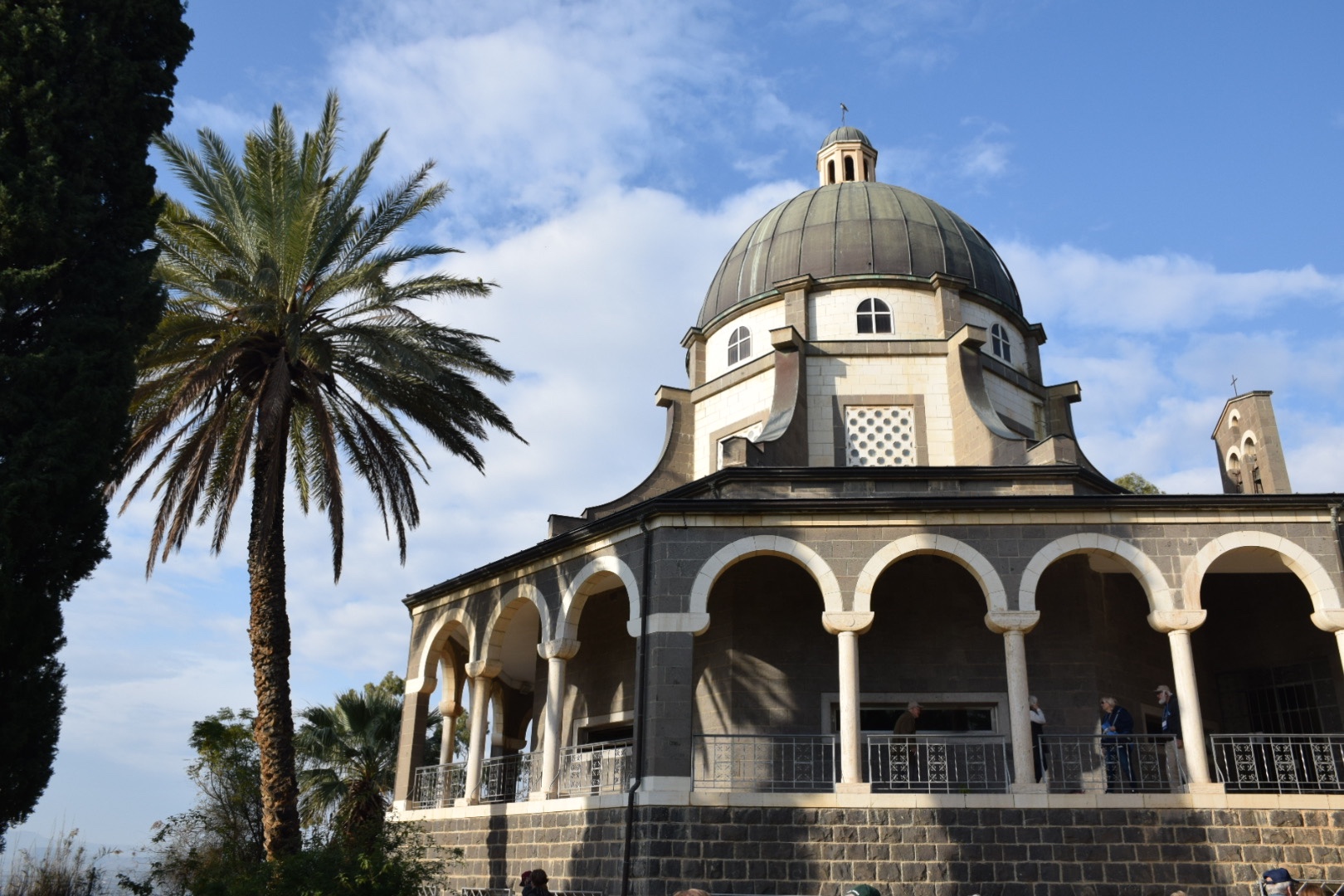
Before boarding the bus, I had a few minutes to tour the Franciscan Church that is built at the top of the mountain.
Capernaum
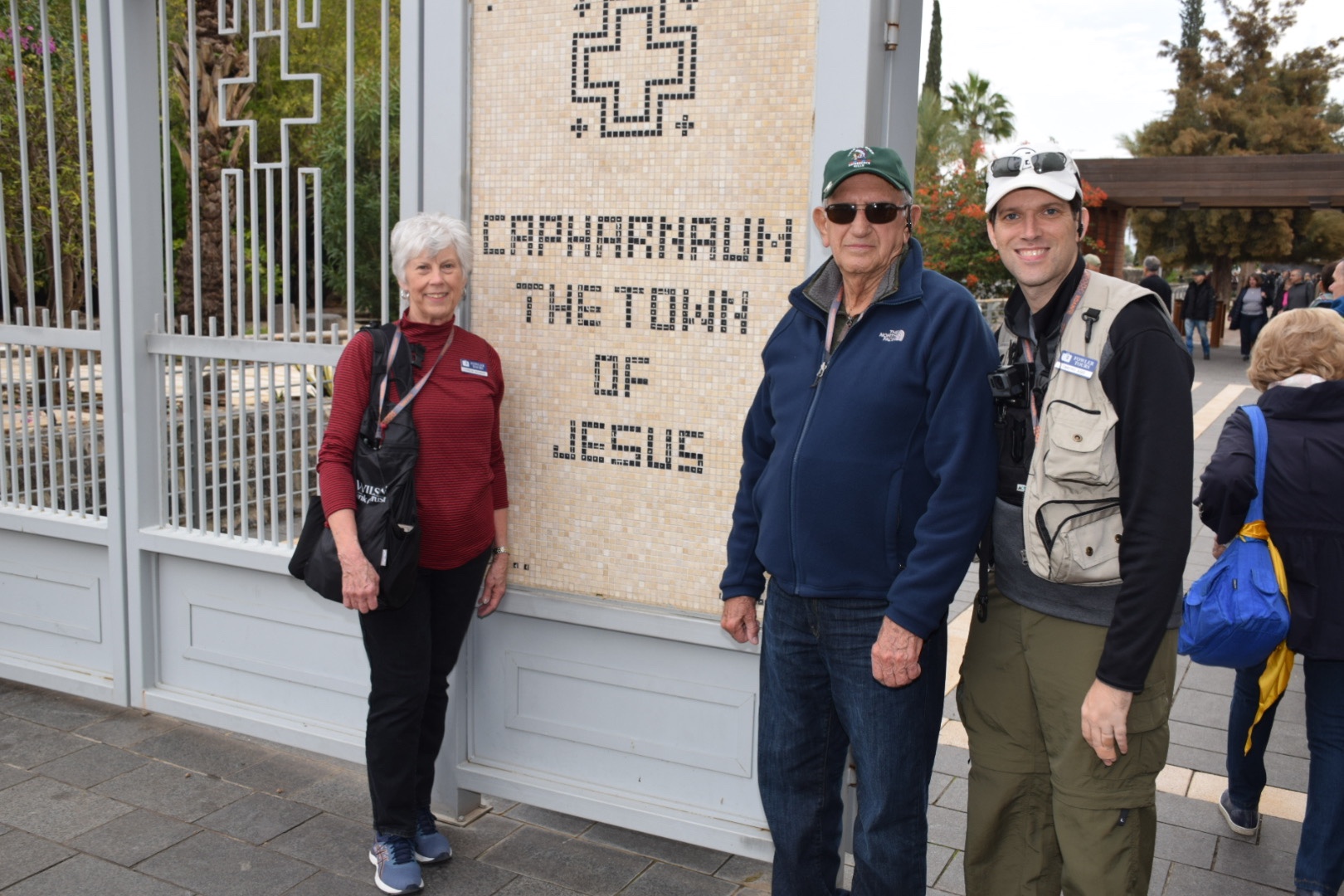
Our next stop was the archaeological site at the nearby town of Capernaum. This town was the home base of Jesus during His Galilean ministry, after he left Nazareth (Matt 4:12-17) and was referred to as Jesus’ “own city” by Matthew (Matt 9:1). The following are some other biblical highlights from Capernaum:
The Gospels reference Capernaum 16 times, but it is not mentioned in the rest of the New Testament. The Gospels also speak of Jesus’ mother and brothers having been in Capernaum (John 2:12), and Matt 17:24–27 demonstrates that Jesus paid the temple-tax there for Himself and Peter.
Capernaum is well known for being the town in which Peter lived and where Jesus healed Peter’s mother-in-law (Matt 8:14–15, Mark 1:29–31, and Luke 4:38–41). The calling of Matthew is also featured prominently in relation to Capernaum. The town housed Matthew and other tax collectors (Matt 9:9–10).
Jesus cursed Capernaum, along with Chorazin and Bethsaida, because even after He performed miracles there, the inhabitants of these towns did not believe He was the son of God (Matt 11:21; Luke 10:13).
Jesus performed the following miracles in Capernaum:
*Healed Jairus’ Daughter (Matt 9:18–26; Mark 5:21–43; Luke 8:41–56)
*Caught a miraculous amount of fish (John 21:4–14)
*Healed a demon possessed man (Mark 1:21–28)
*Healed Peter’s mother-in-law (Matt 8:14–15)
*Healed a paralytic (Matt 9:2–8; Mark 2:1–12; Luke 5:17–20)
*Healed the centurion’s servant (Matt 8:5–13; Luke 7:1–10)
*Healed the woman with the issue of blood (Mark 5:21–43)
Murad showed us around the archaeological site, which included remains of:
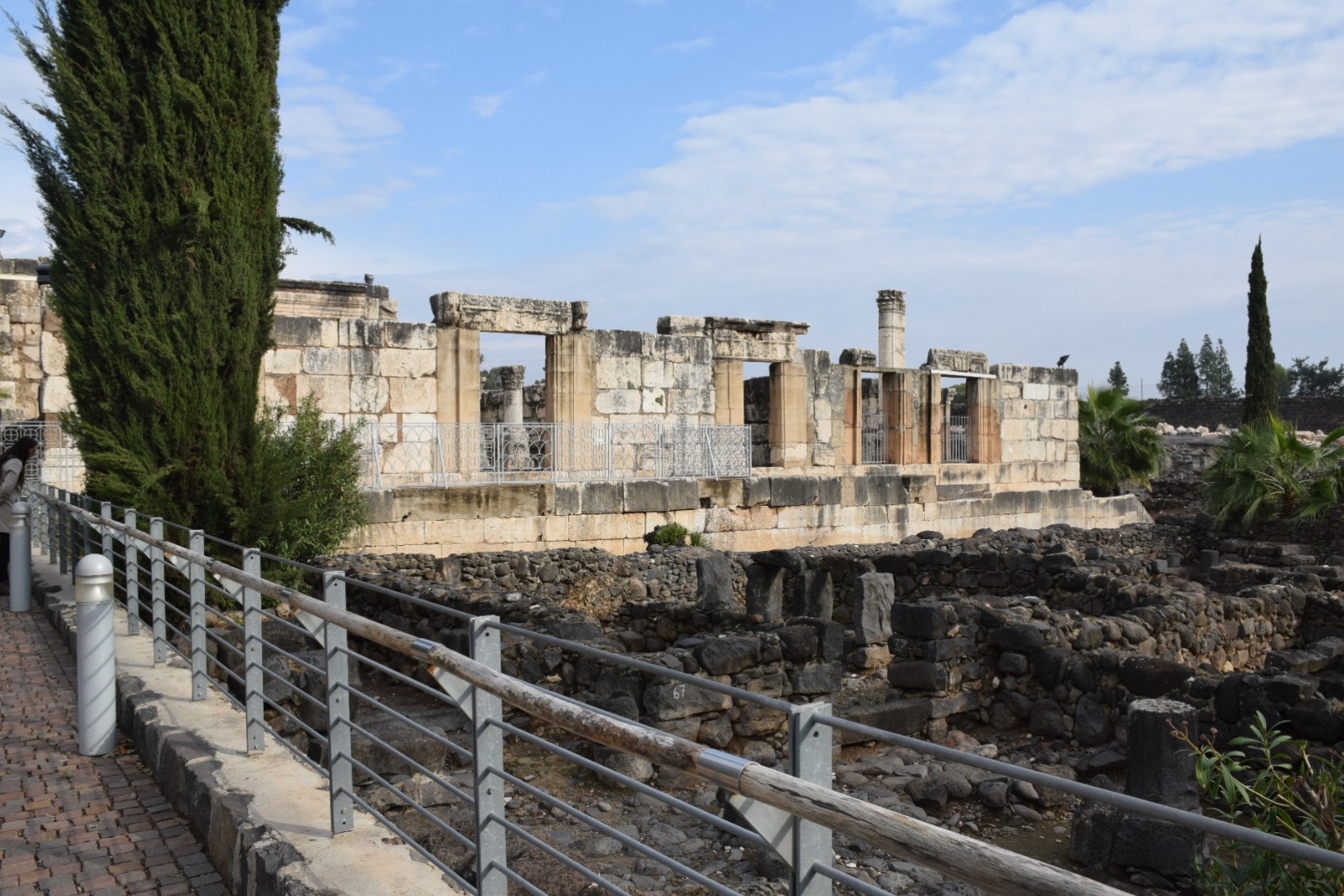
*A synagogue from the 4th century AD that was built on top the synagogue from the first century AD (John 6:59)

*A house from the first century AD that is traditionally identified as the house of Peter or his mother in law. These remains are surrounded by a wall from the remains of an octagonal Byzantine church.

*An olive press with a millstone from the first century AD. The millstone brought to mind the message of Jesus:
Matthew 18:5-6
“Whoever receives one such child in my name receives me, but whoever causes one of these little ones who believe in me to sin, it would be better for him to have a great millstone fastened around his neck and to be drowned in the depth of the sea.“
*Two Roman milestones from the first century AD, one which has an inscription that reads “Zebedee.”

*A black stone with a menorah that was likely from the first century AD synagogue. The menorah is a candlestick with seven branches that represent the six days of creation and the sabbath (shavat שָׁבַת)
Murad explained that the excavation was only a small part of the town, because Capernaum was quite large. He also commented about Jesus cursing Capernaum, along with Chorazin and Bethsaida, and noted that all three are now only archaeological sites.

Before leaving Capernaum, some of us walked down to the Sea of Galilee for pictures.
Sea of Galilee

Next we went nearby to sail on the Sea of Galilee and to see a boat that was recovered from the first century AD. The Sea of Galilee is known by the following names in scripture:
1. Sea of Chinnereth (Num 34:11; Josh 12:3; 13:27)
2. Sea of Gennesaret (Luke 5:1)
3. Sea of Tiberias (John 6:1; 21:1)
4. Sea of Galilee (Matt 4:18)
The Old and New Testaments both mention the Sea of Galilee. The Gospels refer to the Sea of Galilee 53 times (48 times as “sea” or “Sea of Galilee”; five times as “lake”). Many more events take place around the lake, and this area is central to much of the ministry of Jesus. Today as we sailed on the lake, there were two stories on the Sea of Galilee that stood out to me:
*Jesus’ calming the storm on the Sea of Galilee (Matt 8:24–26; Mark 4:35).
*Jesus walking on the Sea of Galilee (Matt 14:22-33; Mark 6:45–53).
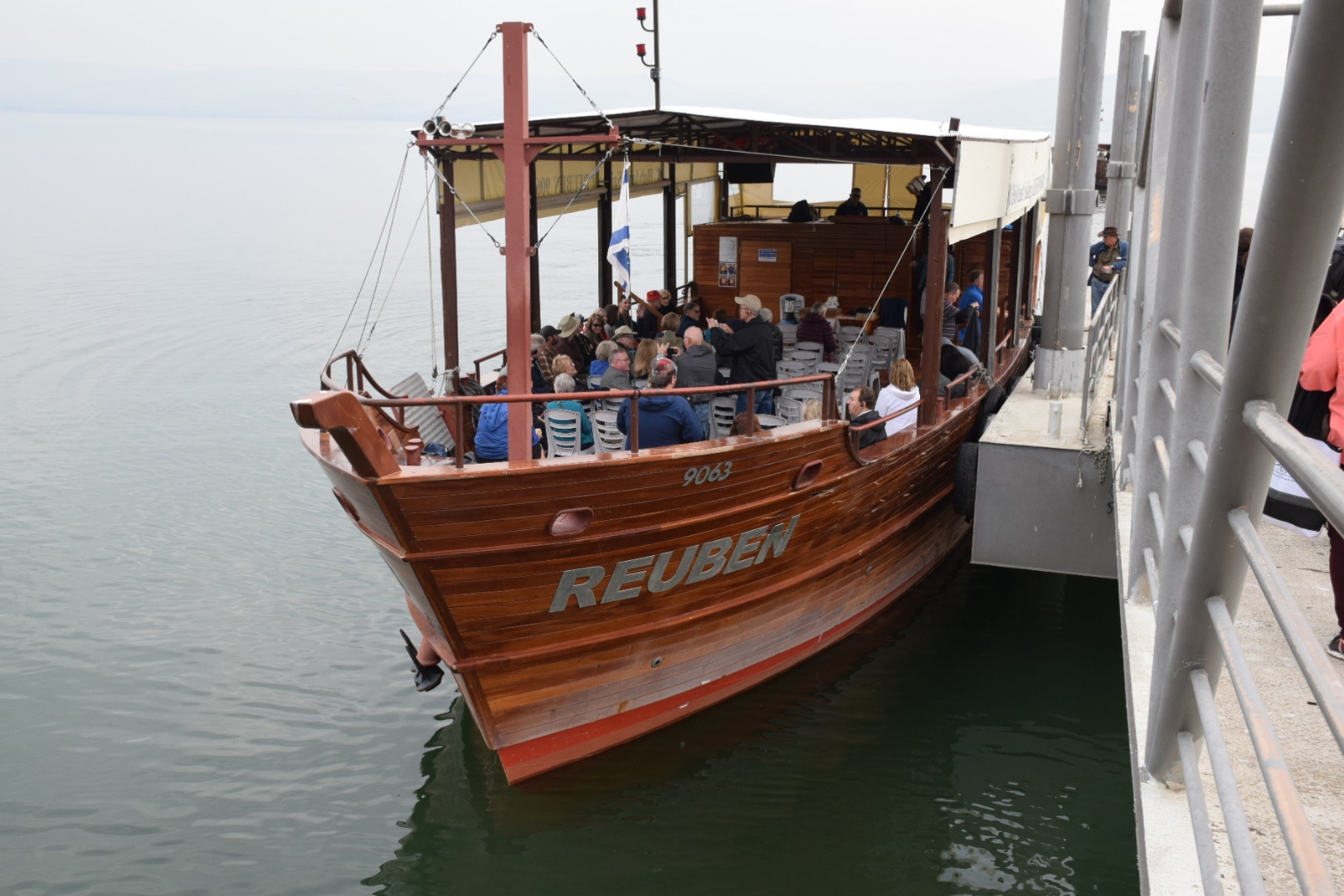
Both groups joined together to sail on the Sea of Galilee in an open-air, wooden boat named Ruben. As we left the dock, the crew raised an American flag and played our national anthem. This was followed by the anthem of Israel.

I was able to sit and stand at the bow of the boat so that I could clearly see the surrounding area.

Ami pointed out both Tiberias on the western side and the land of the Gadarenes on the east. The thing that struck me, and others verbalized, was that while many “sites” are questioned (e.g. Mt of Beatitudes), there can be no question about the Sea of Galilee. This is the lake that Jesus calmed, and the one that He walked on.
After Ami finished, Dr. Cloud told a story about my preaching mentor, Dr. Marlin Connelly, who has been to Israel over 25 times. Dr. Cloud said that he had joined Dr. Connelly on one of his later trips, and that Dr. Connelly had expressed disappointment that he had never been on the sea with a storm. On that trip, a severe storm came up that was so bad people were getting sick. He said that Dr. Connelly was thrilled. This made me smile because of how much I love him and know that he loves Israel. Next, Clay Brown from Columbus Ohio read from Matt 4 about Jesus coming to Galilee fulfilling prophecy, sang “Love Lifted Me,” and then taught a short lesson around the letters S E A; S – Salvation; E- Encouragement; A – Assurance before closing with two more hymns.
Back at the dock, Murad told us more about the Sea of Galilee. The Jordan River feeds into the Sea of Galilee from the north and flows out from the south. The sea takes water from the Jordan and then gives it to the Dead Sea. This sounds like the basis for a good sermon metaphor. The Sea of Galilee supplies 40% of fresh water in the area. It is 14 miles long, 7 miles wide, 45 meters deep. It sits 213m below sea level.

With this discussion, it began to sprinkle a bit as we moved inside the center to see the ancient boat that was discovered at the Sea of Galilee in 1986. We first watched a short movie that explained how the boat was discovered, extracted, and then preserved. The boat is dated to the first century AD and was discovered during drought time by two men who found ancient nails sticking up through the mud. The mud had preserved this 2,000-year-old boat from the elements. The extraction was completed by covering the entire boat in polyurethane foam and sailing it on the sea so that it could be extracted by a crane. The preservation process was extensive and took 10 years before it was ready to display. The results are incredible, and along with the millstone, and Sea of Galilee, was a highlight of the day. I was entranced by this boat from the time of Jesus.
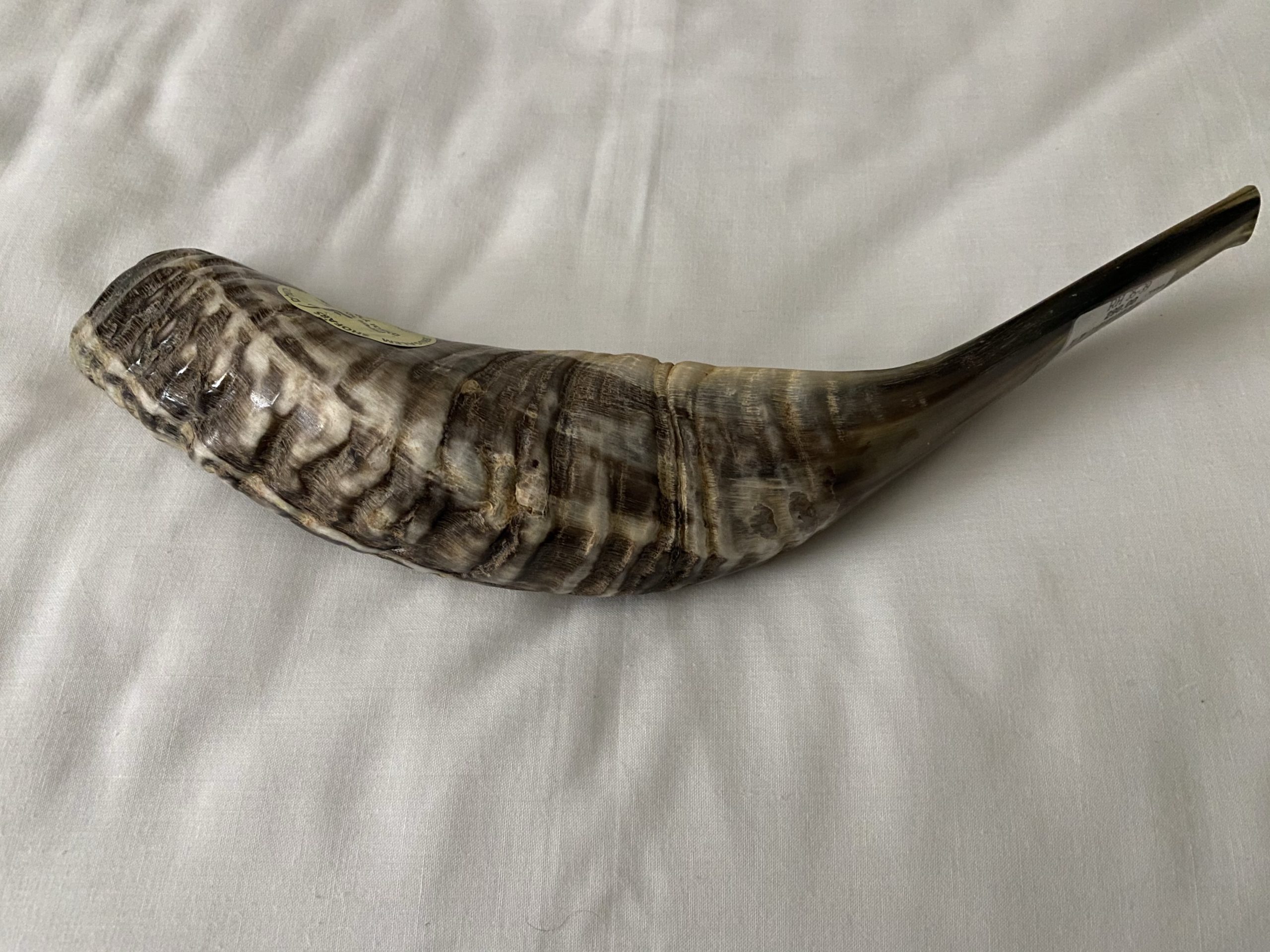
This same facility also had a shop where I bought an authentic Shofar (Ram’s Horn). I recently completed teaching a class on the feasts and festivals of Israel, and the Shofar is very prominent in the observation of Yom Kippur and Rosh Hashanah. The rain had really started to come down while we were in this building, so it was a very wet walk to the bus.

For lunch we stopped at Cafe Vero, and I had “Saint Peter Fish,” which was an entire tilapia fish, head and all. It was quote delicious, and it seemed like almost everyone who ordered it really enjoyed it.
Magdala
Our first stop after lunch was the town of Magdala, which is on the west shore of the Sea of Galilee, north of Tiberias. The name Magdala means “tower.” This is possibly the birthplace and residence of Mary Magdalene (Mark 15:46-16:1; Luke 8:2-3; John 19:25). The discoveries at Magdala are quite recent, and Murad took us through three significant ones:

*First Century AD Synagogue – The remains of this synagogue that have been uncovered have not been restored in any way and are quote impressive. It is a rather large structure with parts of a mosaic floor still intact.

In the middle of the synagogue was found a stone box with four feet that contains imagery from the temple and was likely used for the scroll of the Torah.

*First Century AD Ritual Baths (Mikveh מקווה) – These were ritual baths cut out of rock and used for Jewish ritual cleansing. One of these was completely intact and was filled with water.

*First Century AD Port – Port to the Sea of Galilee for Magdala. There was a mosaic of a ship found at this location (removed from site), and the ship looked very similar to the ancient Galilee boat we had just seen.
We also briefly toured a Franciscan church that has been built on this site. Murad expressed frustration at how the Franciscan’s are commercializing this site to make money by building a hotel, restaurants, and likely destroying historical artifacts in the process.
Some manuscripts of Matt 15:39 refer to Jesus coming into “the region of Magdala,” however this translation is called into question. With that it is unknown if scripture directly supports that Jesus was ever in Magdala. However, it is clearly in the vicinity of much of His ministry, so it is certainly possible that he came here.
Even though it rained almost the entire time we were here, I really enjoyed the visit.
Jordan River

For our final stop, we went to baptismal site on northern end of the Jordan River. The Jordan is mentioned over 180 times in the Old Testament and 15 times in the New Testament. Here are some notable highlights:
*It is first mentioned in Gen 13:10 when Lot admires the land “like the garden of Yahweh.”
*Joshua leads the children of Israel across the Jordan into the Promised Land and sets up the memorial stones from the Jordan (Josh 3–4).
*Elijah crosses the Jordan prior to his ascension (2 Kgs 2:6-8)
*The river is prominent in Elisha’s miracles—the parting of the Jordan (2 Kgs 2:14), the healing of Naaman (2 Kgs 5:9–14), and the floating ax head (2 Kgs 6:4–7).
*John the Baptist baptized Jesus in the Jordan River (Matt 3:13-17; Mark 1:9-11; Luke 3:21-22

Again, just like the Sea of Galilee there can be no question that this is the real site. The surrounding baptismal center is pretty commercialized, but it was still awesome to see the river. A couple members of our group were even baptized in the river, and I walked down to the edge to put my hand in the water.
On the way back to the hotel, the bus briefly stopped at a pharmacy which was nice since I could get more bandages and ibuprofen for my finger and hand. BTW – it definitely hurts, and is very swollen, but is not a big deal in the grand scheme of things. Has not really hindered my trip in any way (other than typing, which I’m still getting done).
At the hotel, it was nice to get out of all my rain clothes and sit down for a nice dinner. I have enjoyed the dinners way more than breakfast, and tonight was no different. After dinner part of the group met for about an hour to listen to Dr. Cloud talk about the historicity of David. This brought back memories of being in his I & II Samuel class many, many years ago at Lipscomb University.
As I finish typing this out, I am again in the hotel lobby, so I have access to good WiFi, but unfortunately no one is playing music right now. On a side note there is a marathon tomorrow that starts and ends in Tiberias and goes around the Sea of Galilee. Seeing all the runners in our hotel is getting my juices flowing and wanting to run another race. Oh well…I’m still hoping to talk to my girls tonight and am excited about another day of touring tomorrow.
